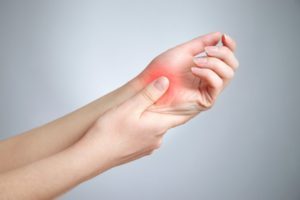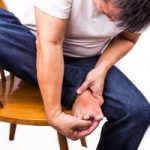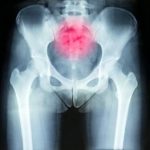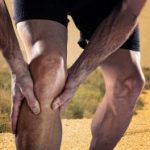 Joint pain can be caused by several different things, some more serious than others. If you injure yourself, you can experience joint pain. If you have an autoimmune disease, you can experience joint pain. Joint pain can occur anywhere in the body that is a joint. This means you can experience big toe joint pain, knee pain, wrist pain, and knee pain.
Joint pain can be caused by several different things, some more serious than others. If you injure yourself, you can experience joint pain. If you have an autoimmune disease, you can experience joint pain. Joint pain can occur anywhere in the body that is a joint. This means you can experience big toe joint pain, knee pain, wrist pain, and knee pain.
For some, joint pain is so severe it negatively impacts their day-to-day life. From the moment a person wakes up, they can suffer from joint pain. They may feel stiff, swollen, their skin may appear red or hot, and they just don’t feel like even getting out of bed. For others, they wake up just fine and throughout the day the joint pain worsens, which makes completing the day a challenge.
Advertisement
Because there is a variety of joint pain, we have compiled a variety of news articles that touch upon different types of pain along with their causes and treatments so you can have greater insight in how to treat your own joint pain.
Thumb joint pain: Causes and treatment options
Pain or swelling in the thumb can be especially irritating and affect your ability to perform simple tasks. Find out what is causing that pesky thumb pain and how to fix it by reading below.
Thumb joint pain sign and symptoms
This type of pain can occur with stiffness, swelling, and tenderness. While the pain may start occurring only when you attempt to perform specific actions, such as gripping, it can worsen into inflammation and chronic pain. This constant pain can affect your ability to open doors, button shirts, and tie shoes, making thumb joint pain a bigger hindrance on your life. Your range of motion with the digit, as well as grip strength, can also worsen if the condition is left unchecked. Continue reading…
 Menopause and joint pain: What is the connection?
Menopause and joint pain: What is the connection?
Joint pain often occurs at the same time as menopause and it affects many women. While there is no clear reason for these achy and swollen joints, some doctors believe it may be due to falling estrogen levels. Estrogen is thought to protect joints and reduce inflammation, and when these levels drop during menopause, inflammation can increase or cause joint pain.
To learn what menopausal joint pain feels like, what the connection between menopause and joint pain is, and how to relieve menopausal joint pain, continue reading. Continue reading…
 Big toe joint pain: Causes, types, and pain relief tips
Big toe joint pain: Causes, types, and pain relief tips
The feet are durable and flexible parts of the human body that are more complex than you would think. They’re made up of tendons, bones, joints, and tissues that all work together to allow us to stand upright, walk, and run. Feet have five toes each, and the big toe is remarkable. It leaves the ground last with each step and is responsible for push-off.
You can imagine that having big toe joint pain would cause a lot of trouble with daily activities, particularly walking. Big toe pain is commonly felt deep in the joint, but sometimes it can also be felt in the toenail. Continue reading…
 Sacroiliac (SI) joint pain dysfunction: Causes of lower back, buttock, and hip pain
Sacroiliac (SI) joint pain dysfunction: Causes of lower back, buttock, and hip pain
SI joint pain, or pain in the sacroiliac joints found between the pelvis and the base of the spine, can be felt in the lower back and buttocks and occurs for a variety of reasons. Continue reading to find out which symptoms to look out for and how SI joint pain is diagnosed and treated.
Sacroiliac (SI) joint pain symptoms
Advertisement
SI joint pain most often begins in the lower back and buttocks and is typically only on one side of the body. The pain can reach up to the lower hip, groin, and upper thigh as well. Numbness, tingling, and weakness in the affected leg are also symptoms associated with SI joint pain. These symptoms can worsen when sitting, sleeping, walking, or using stairs. Those with SI joint pain may also find it painful to ride in a car. Continue reading…
 Simple exercises for joint pain relief
Simple exercises for joint pain relief
What is the last thing you want to be doing with joint pain? Chances are, it’s exercise. Numbing aches, persistent discomfort, and overall tightness are not really encouraging of physical activity, let alone a full-blown workout. But here’s the twist—unless your condition is disabling, you should be making an effort to move around despite your joint pain. A lack of mobility weakens your muscles, meaning more stress is put on the joints, exacerbating the existing pain. As long as you keep your intensity level moderate and alternate between different parts of the body, you will reap the benefits of physical activity in the form of pain relief and prevention of future bouts of joint ache.
The following are probably some of the most common and well-known exercises. They are easy to perform and suitable for any fitness level. Try incorporating these into your daily routine, but be gentle at first and don’t go overboard. After all, you want to help your joints rather than causing them extra stress. Continue reading…
